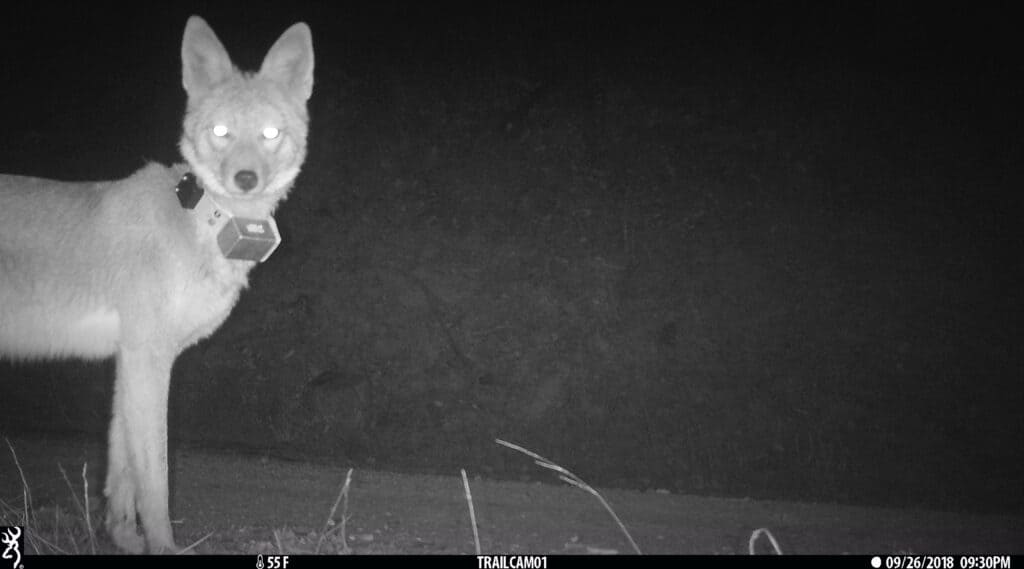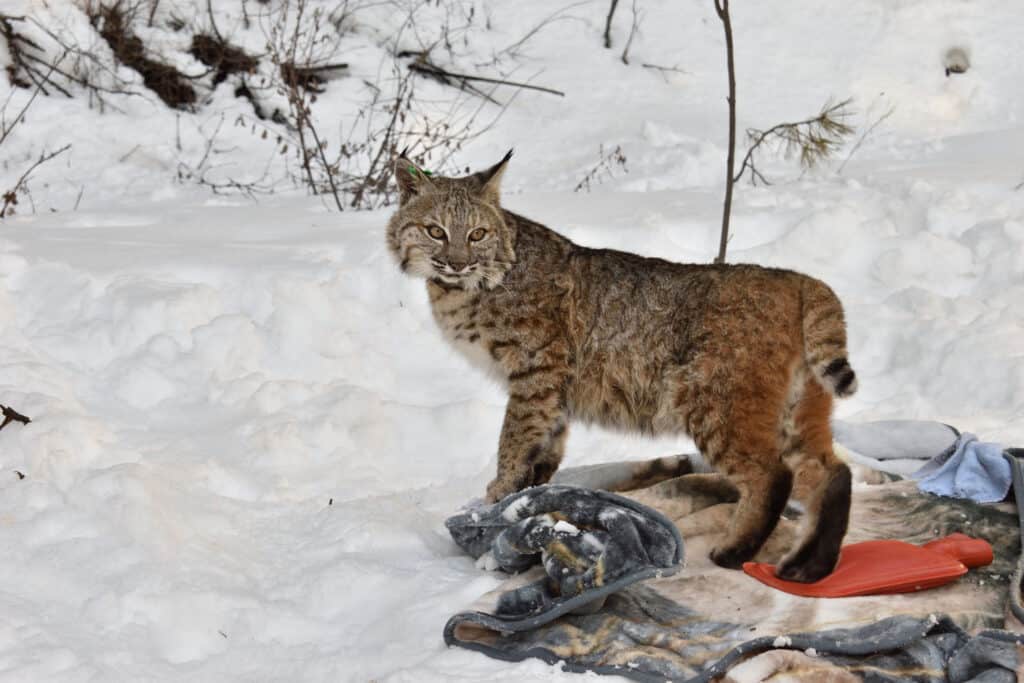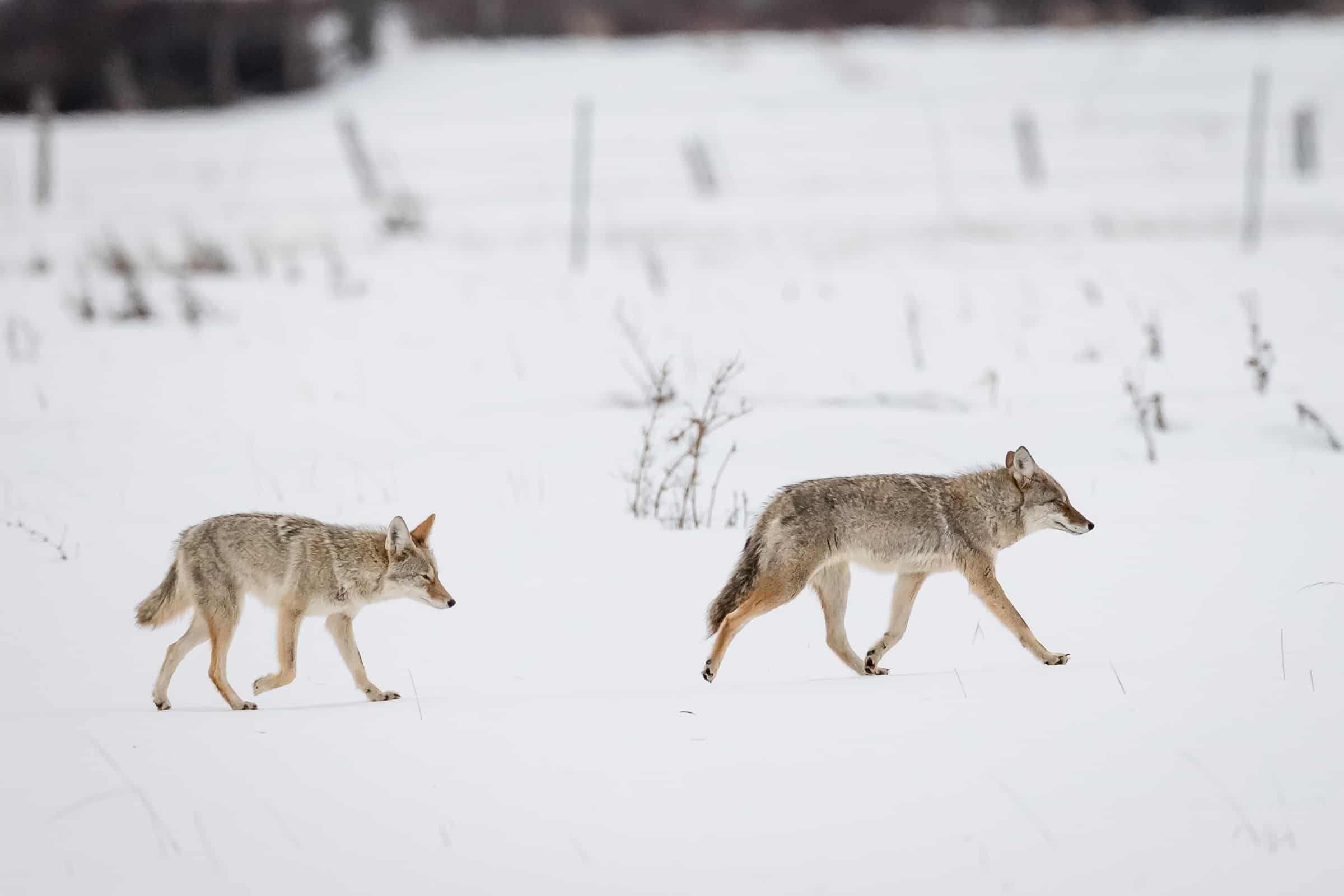Share this article
Wildlife Featured in this article
- Gray wolf
- Cougar
- Coyote
- Bobcat
- Marten
- Fisher
Human shields can be lethal for midsized predators
Choosing humans over predators, coyotes and bobcats put themselves at risk
Coyotes and bobcats that get close to humans to avoid big predators may be in for a surprise. In rural Washington, researchers found, humans were responsible for greater mortality than the wolves and cougars the mesopredators were trying to avoid.
Researchers described it as the “paradox of the lethal human shield,” in which mesopredators trying to reduce risk may have jumped out of the frying pan into the fire.
“Their fear of large carnivores was actually stronger than their fear of humans,” said TWS member Laura Prugh, associate professor of wildlife science at the University of Washington and the lead author of the study published recently in Science.

By following the movements of wolves (Canis lupus), cougars (Puma concolor), coyotes (C. latrans) and bobcats (Lynx rufus) using GPS collars, Prugh’s team found that when large carnivores were nearby, the smaller predators shifted to areas with more human habitation. But rather than finding refuge, the mesopredators were killed more than three times as often by humans than by wolves and cougars.
“Humans were a much more important source of mortality,” Prugh said.
Prugh was part of the Washington Predator-Prey Project, a large effort launched in 2016 by the state wildlife agency and the University of Washington as wolf populations there were on the rise. Researchers wanted to see how large carnivores were affecting prey species like deer and elk (Cervus canadensis).
“It’s kind of a case where predators and humans were working together to control mesopredators.”
Laura Prugh
But Prugh was interested in how smaller carnivores might also be affected. She wanted to see if the sort of beneficial, ecosystem-wide effects that carnivore restoration can have in national parks could also happen in a human-dominated landscape. In the absence of large carnivores over the past century, some mesopredators, like coyotes, have surged in population. She wondered if growing numbers of wolves and cougars on the landscape could help keep these populations of smaller carnivores in check.
The result was yes, and no. Large carnivores led to a reduction in coyotes and bobcats—the reason was complicated.
“In a sense, the large carnivores were indirectly suppressing mesopredators by basically pushing them to areas where people were killing them,” Prugh said. “It’s kind of a case where predators and humans were working together to control mesopredators.”

For the study, researchers used GPS collars to track the activity of 22 wolves (Canis lupus), 60 cougars (Puma concolor), 35 coyotes (Canis latrans) and 37 bobcats (Lynx rufus) across two study areas in north central and northeastern Washington from winter 2017 to summer 2022.
At two sites in rural areas—one in north central Washington and one in northeastern Washington—researchers tracked 22 wolves, 60 cougars, 35 coyotes and 37 bobcats from the winter of 2017 to the summer of 2022.
In that time, 14 coyotes and 11 bobcats were killed by humans. Except for one hit by a car, all the coyotes were shot by landowners and hunters. Eight bobcats were trapped by fur trappers, and three others were shot. Only eight deaths—five coyotes and three bobcats—were caused by large predators.
Animals seeking a human shield isn’t something unusual. Wildlife often perceives people as less dangerous than predators. Elk are known to avoid wolves in Banff National Park by staying close to town, and prey species in Alberta have been documented staying close to roads and trails to avoid predation.
But for mesopredators in rural areas, where they’re often seen as a nuisance or a target, the choice is a riskier one. There may be good reason for it, Prugh said. While wildlife may be able to use sight, sound or smell to gauge the risk from a predator, sensory cues aren’t good at detecting high-powered rifles with long-range scopes or traps. And the presence of livestock and chicken coops may offer additional incentives for bobcats and coyotes to take a chance.
Whether this dynamic is positive for the ecosystem remains in question, the researchers concluded. While controlling mesopredators—including coyotes, which have been increasing in number and expanding in range—may have benefits, it could raise concerns for smaller predators, like martens (Martes americana) and fishers (Pekania pennanti), whose populations may be imperiled.
“That double whammy from people and large carnivores could be of conservation concern for some of these species,” Prugh said.
Header Image: Coyotes that seek refuge from predators in human-dominated landscapes may face other risks. Credit: Loren Mooney








